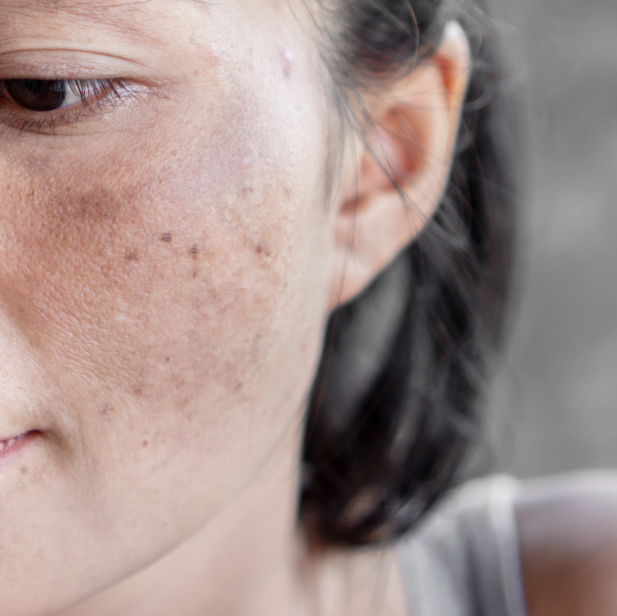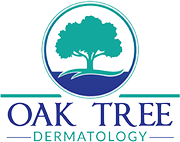
Understanding Sun Damage and Its Effects on Skin
Sun damage, a term often used interchangeably with photoaging, occurs when the skin is exposed to ultraviolet (UV) radiation from the sun. This exposure leads to an array of skin issues, primarily due to the detrimental effects of both UVA and UVB rays. While UVA rays penetrate deeper into the skin, causing long-term damage and premature aging, UVB rays are responsible for more immediate effects, such as sunburn. The combination of these rays accelerates the breakdown of collagen and elastin fibers, which are essential for maintaining the skin’s youthful firmness and elasticity.
The most visible consequence of sun damage is the appearance of dark spots and pigmentation irregularities. These manifestations, known as solar lentigines or age spots, occur when melanin production ramps up as a defense mechanism against UV radiation, resulting in uneven skin tone. Over time, these spots become more pronounced, adding years to one’s appearance.
Additionally, sun damage can exacerbate other skin conditions, such as melasma, which is characterized by brown or gray patches typically found on the face. The effects of sun exposure are cumulative, meaning that even brief periods of unprotected sun exposure can add up over the years, leading to more significant skin concerns.
Understanding these impacts underscores the importance of adopting sun protection measures, such as wearing sunscreen, seeking shade, and donning protective clothing. By taking these proactive steps, individuals can mitigate the adverse effects of sun exposure, preserving both the health and appearance of their skin.
Exploring IPL Therapy for Sun Damage Correction
Intense Pulsed Light (IPL) Therapy emerges as a formidable ally in the battle against sun damage, offering a beacon of hope for those plagued by dark spots and uneven skin tone. This non-invasive treatment utilizes broad-spectrum light to penetrate the skin, targeting melanin and blood vessels beneath the surface. The result is a reduction in pigmentation issues, helping to restore a more uniform complexion.
IPL therapy operates on the principle of photothermolysis, where the light energy is absorbed by pigmented cells, causing them to break down and be naturally eliminated by the body. This process not only diminishes the appearance of dark spots but also stimulates collagen production, enhancing skin texture and elasticity over time. It’s a dual-benefit approach that addresses both pigmentation and the overall health of the skin.
Benefits of IPL Therapy
- Non-Invasive: Unlike some other treatments, IPL does not require surgery or extensive downtime, making it a convenient option for those with busy lifestyles.
- Customizable: The intensity and wavelength of the light can be adjusted to suit different skin types and concerns, ensuring a personalized treatment plan.
- Versatile: Apart from correcting sun damage, IPL can also address issues like rosacea, spider veins, and even unwanted hair.
While IPL therapy is generally considered safe for most individuals, it is crucial to consult with a certified dermatologist to ensure it’s the right choice for your specific skin type and condition. As with any cosmetic procedure, understanding the potential risks and benefits will help in making an informed decision. By exploring IPL therapy, you can take a proactive step towards saying goodbye to sun damage and welcoming a more radiant, even complexion.
The Role of Prescription Skincare in Treating Dark Spots
When it comes to addressing the persistent challenge of dark spots and uneven skin tone, prescription skincare plays a pivotal role in achieving transformative results. Unlike over-the-counter products, prescription treatments are meticulously formulated to target hyperpigmentation with higher concentrations of active ingredients, offering a more potent solution tailored to individual skin concerns.
Potent Active Ingredients
At the heart of prescription skincare are active ingredients such as hydroquinone, tretinoin, and corticosteroids. Hydroquinone, a powerful skin-lightening agent, works by inhibiting melanin production, effectively lightening dark spots over time. Tretinoin, a derivative of vitamin A, accelerates cell turnover, promoting the shedding of pigmented skin cells and facilitating the emergence of a more even complexion. Meanwhile, corticosteroids reduce inflammation, which can help prevent further pigmentation.
Customized Treatment Plans
The value of prescription skincare extends beyond the ingredients themselves. Dermatologists tailor treatment plans to suit the unique needs of each patient, taking into account skin type, the severity of pigmentation, and any underlying conditions. This personalized approach ensures not only efficacy but also minimizes the risk of side effects, such as irritation or increased sensitivity, which can occur with improper use of potent formulations.
Long-term Results and Maintenance
Consistency is key with prescription treatments. While initial improvements may be visible within weeks, long-term commitment is essential for sustained results. Dermatologists often recommend combining prescription skincare with sun protection measures, such as broad-spectrum sunscreen, to prevent the recurrence of dark spots and maintain an even skin tone. This dual approach not only addresses existing pigmentation but also protects against future damage.
In conclusion, prescription skincare offers a robust framework for tackling dark spots and uneven skin tone. By leveraging potent active ingredients and personalized treatment plans, it provides a comprehensive solution that addresses both the symptoms and underlying causes of hyperpigmentation, paving the way for a clearer, more radiant complexion. As you embark on this journey, consulting a dermatologist will ensure that your skincare regimen is both effective and safe, tailored specifically to your skin’s needs.
Benefits of Chemical Peels for Uneven Skin Tone
Chemical peels have long been celebrated in the skincare world for their transformative effects on uneven skin tone. By employing a blend of exfoliating acids, these treatments penetrate the surface layers of the skin, encouraging the shedding of dead skin cells and prompting the rejuvenation of healthier, more evenly pigmented layers beneath. This process is not only effective in diminishing dark spots but also in enhancing the overall complexion, rendering the skin with a more uniform appearance.
One of the primary advantages of chemical peels lies in their versatility. They cater to various skin types and concerns, offering a range of formulations tailored to specific needs. From superficial peels that gently exfoliate the outermost layer to deeper peels targeting more pronounced discoloration, these treatments can be customized to address individual skin challenges. Such adaptability ensures that whether one is dealing with mild sunspots or more persistent hyperpigmentation, there is a peel that can effectively address the issue.
Moreover, chemical peels promote collagen production, a vital component in maintaining skin elasticity and firmness. This boost in collagen not only aids in evening out skin tone but also contributes to a more youthful, vibrant appearance, reducing the visibility of fine lines and wrinkles. The result is a multifaceted improvement that enhances the skin’s texture and tone, providing a radiant and rejuvenated look.
Incorporating chemical peels into a regular skincare regimen can thus offer profound benefits, serving as a potent ally against sun damage and uneven pigmentation. With consistent use, they pave the way for skin that not only looks healthier but feels rejuvenated, embodying the essence of revitalized beauty.
Incorporating Antioxidants in Your Skincare Routine
Antioxidants are potent allies in the battle against sun damage, dark spots, and uneven skin tone. Their primary role in skincare is to neutralize free radicals—unstable molecules generated by UV radiation and environmental pollutants that can wreak havoc on your skin. By incorporating antioxidants into your daily regimen, you not only protect your skin from future damage but also help repair existing imperfections.
Understanding the Benefits of Antioxidants
Antioxidants, such as Vitamin C, Vitamin E, and ferulic acid, provide a multi-faceted approach to skin health. Vitamin C is widely praised for its ability to brighten the skin, reducing the appearance of dark spots and enhancing overall radiance. Its brightening effects are bolstered by its role in collagen synthesis, which helps maintain skin firmness and elasticity.
Meanwhile, Vitamin E acts as a powerful moisturizer and skin barrier enhancer, working in synergy with Vitamin C to maximize protective benefits. Ferulic acid, often found in tandem with these vitamins in serums, stabilizes and amplifies their effectiveness, providing a robust defense against oxidative stress.
Integrating Antioxidants into Your Routine
To effectively incorporate antioxidants, consider starting with a serum as they are typically concentrated and can penetrate deeply into the skin. Apply it in the morning to act as a shield against daytime exposure to free radicals. Additionally, using an antioxidant-rich moisturizer can provide a secondary layer of protection, ensuring your skin remains hydrated and resilient throughout the day. With consistent use, you can expect a visible improvement in skin clarity and a reduction in discoloration.
By making antioxidants a staple in your skincare routine, you are not only addressing existing concerns but also fortifying your skin against future damage, paving the way for a more even and luminous complexion.


